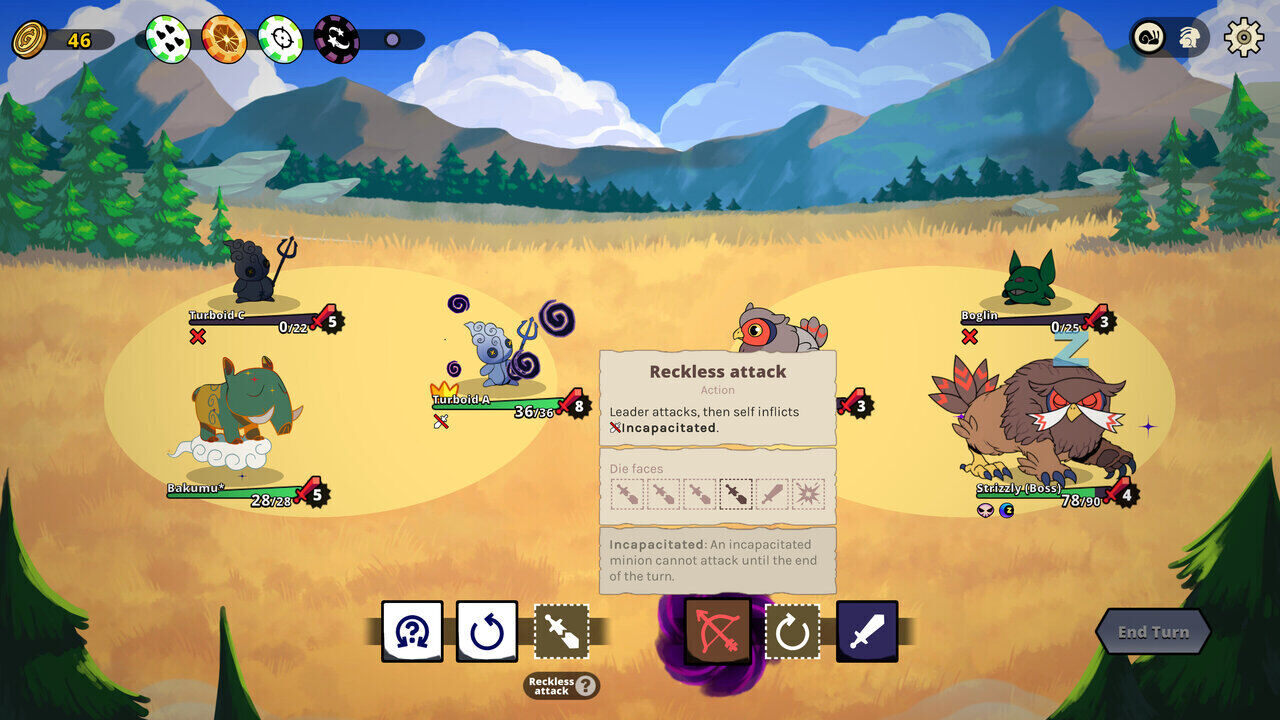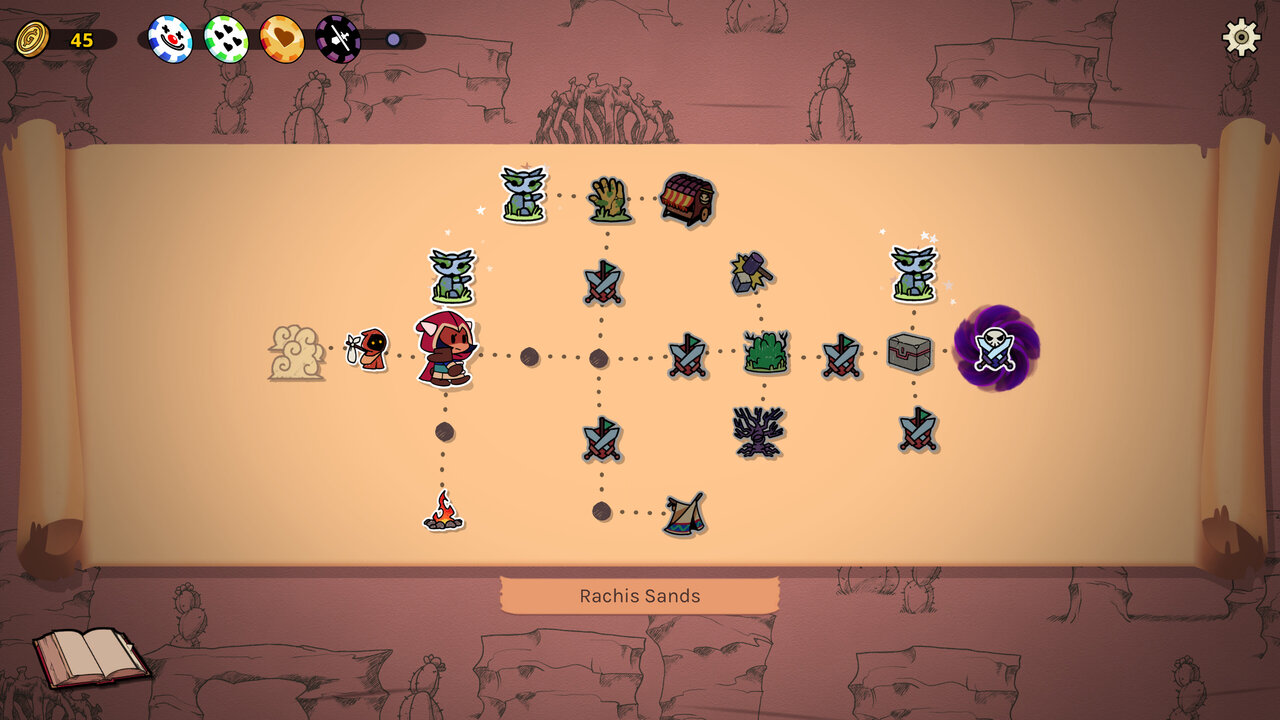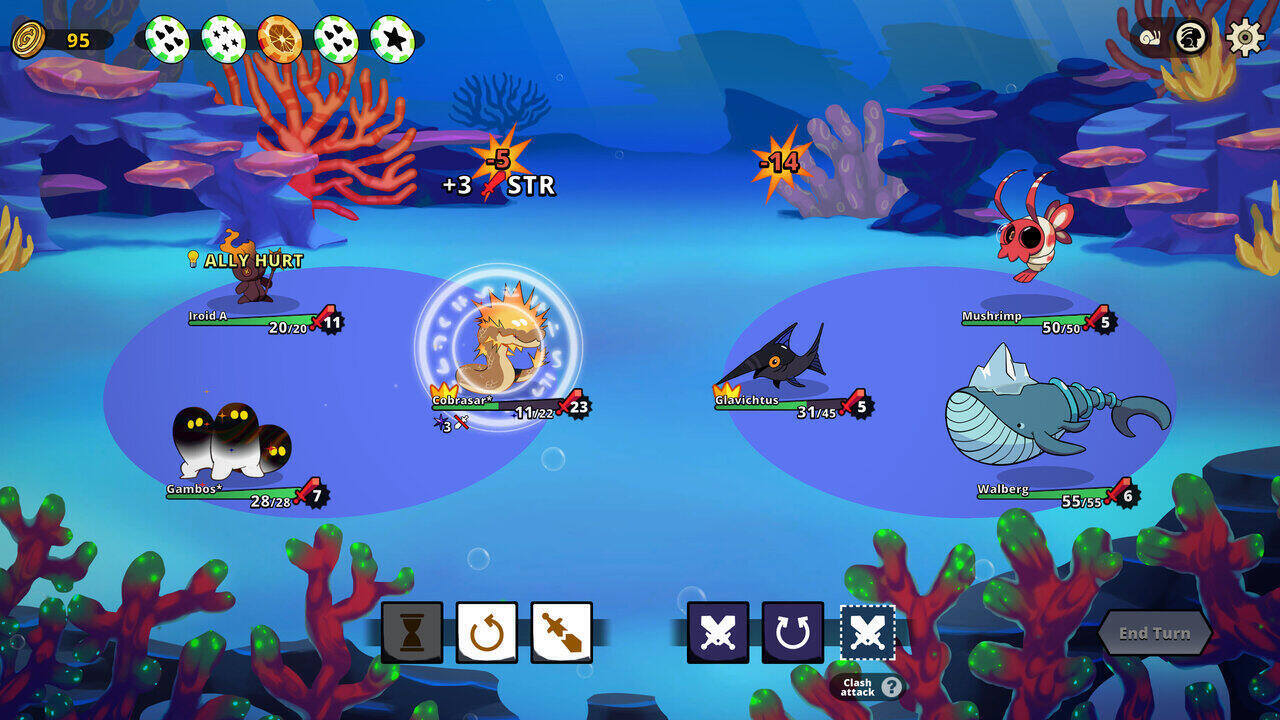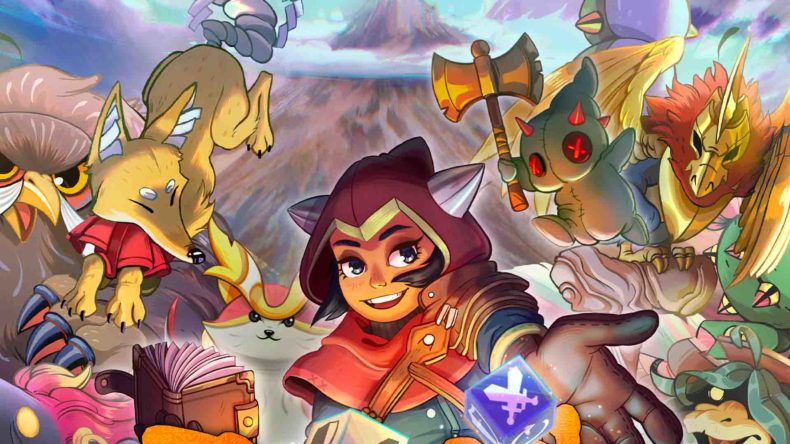I’ve always found it odd that people get annoyed about luck being a factor in video games. I personally love those moments where you draw the right card in a deck building game that gets you out of a sticky situation, or finding the perfect upgrade for a build in a Roguelike. Of course when lady luck isn’t on your side it’s maybe less fun, but the best players make sure to account for those moments and overcome them. Luck is something you’ll need to have on your side if you want to succeed at Dicefolk, so get ready to roll them bones and hope for the best.
In Dicefolk you play as a Chimera Tamer, who’s on a quest to save the world from a big bad force of evil. What’s a Chimera Tamer? Why it’s someone who gathers badass monsters and uses them to fight other badass monsters of course. Each run of the game sees you collecting and upgrading a team of three of these critters, with the aim of making it to a door that needs opening to save the day. This may not sound particularly difficult, but you’ll soon realise that you have to fight a hell of a lot of Chimera to get there.

Battles play out by the rolling of a whole lot of dice, which have different symbols on that correspond to different actions. At a basic level this means when you roll an attack you can order your Chimera in the leader position to deal damage to the enemy leader, but there are also actions that’ll let you guard, rotate in another Chimera or even deal damage to all the enemies you’re fighting at once. It’s an easy to learn combat system, but one with a lot of depth to master.
One of the things you’ll have to master first is how to best deal with enemy attacks, because as well as rolling dice for your actions you also roll some for the enemy. You can’t end a turn and reroll all the dice without using all the enemy actions, but often you can use the enemy actions in a way that means you take less damage. Perhaps you want to rotate their weaker Chimera in before unleashing their attack, or even better you could bring a sleeping enemy to the front row who can’t attack at all. Managing enemy actions is just as important as managing your own, and it’s so satisfying when you find ways to take advantage of it.
In a lot of monster collecting games different monsters have different stats, but essentially aren’t particularly different from each other. That’s not the case in Dicefolk, thanks to the special abilities that every creature has. In my first run of the game I had a pretty basic trio of buddies who has strong attacks and could deal with enemies efficiently by hammering down on the attack dice, but my team on the second run was completely different. With abilities that activated when rotating in and out of the leader position, they were actually able to deal way more damage by spinning around the battlefield than by using standard attacks. It’s really impressive how varied the Chimera you gather are, and it makes every Roguelike run of the game feel exciting and fresh.

Each run of Dicefolk sees you picking a different starting team of weak critters, then throws you onto a map full of different symbols. A lot of these symbols are combat encounters, but there are also statues where you’ll find new Chimera to recruit, shops to spend that hard earned gold, and campfires where you can heal and upgrade your team. Unlike a lot of Roguelikes you don’t have to follow a path and decide which of these is more important, and instead are able to explore every themed map in full before fighting the boss. If you’re worried about how much punishment your team can take then you can avoid some fights and try to rush to the end, but usually those upgrades will be far too tempting.
The most powerful way to upgrade your combat abilities is at the Dicesmith. Here you can buy new faces to stick on your dice to replace some of the weaker rolls you can get, and even buy entirely new dice essentially granting you an extra action each turn. Taking a basic die and adding powerful attacks and rotations to it is the best way to make future battles easier, and is where I ended up spending most of my cash.
Powerful equipment is important too though, and can often make one of your less impressive Chimera the star of the team. One Chimera I found very early in a run was able to attack at the end of each turn from the back row, but was pretty weak outside of that. The sudden discovery of a piece of equipment that doubled its attack when not in the leader position made this little warrior snail unstoppable, and I don’t think I’d have survived that run without it.

The way all the systems work together in Dicefolk is just fantastic, and on every run I discovered a new strategy to use that made me feel like a genius. Using dice instead of cards makes what is essentially deck building so much more accessible, and it’s really rare you find an upgrade that isn’t something you want to add to your repertoire. Although I wasn’t able to play more than a couple of stages in this preview build of the game, I just kept coming back to try out different starting teams and the new unlocks I’d earned from prior runs.
Dicefolk is one of the most compelling and enjoyable games I’ve previewed in a long time. The different systems have been designed to interact in such clever ways, the dice combat is an absolute blast, and it’s full of adorable (and more importantly varied) monsters to gather and fight. I’m so ready to dive into the full release version of Dicefolk, because this game is something special.
Dicefolk is coming to PC via Steam on February 27th.






